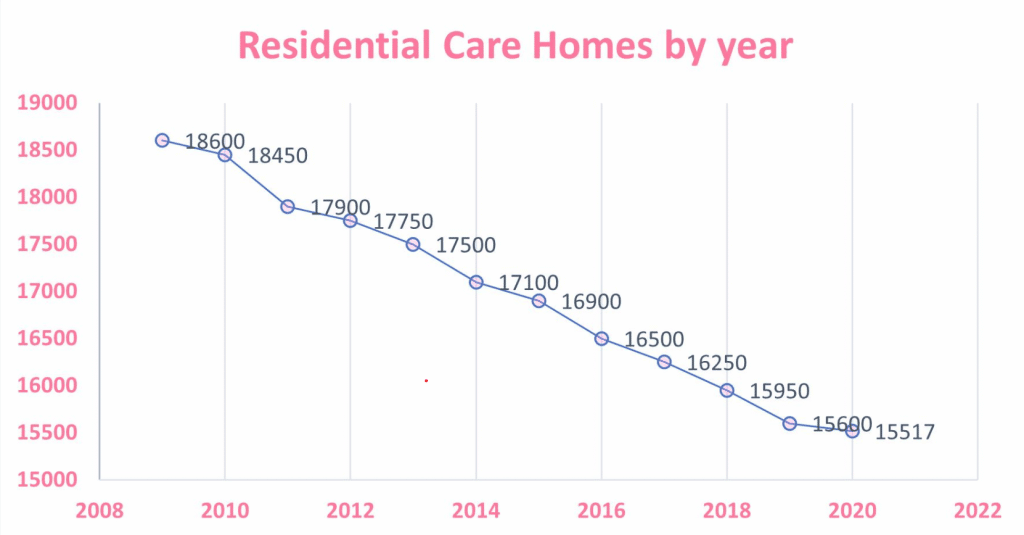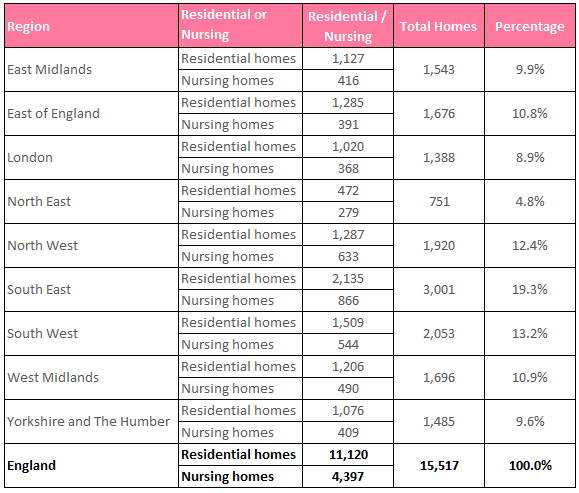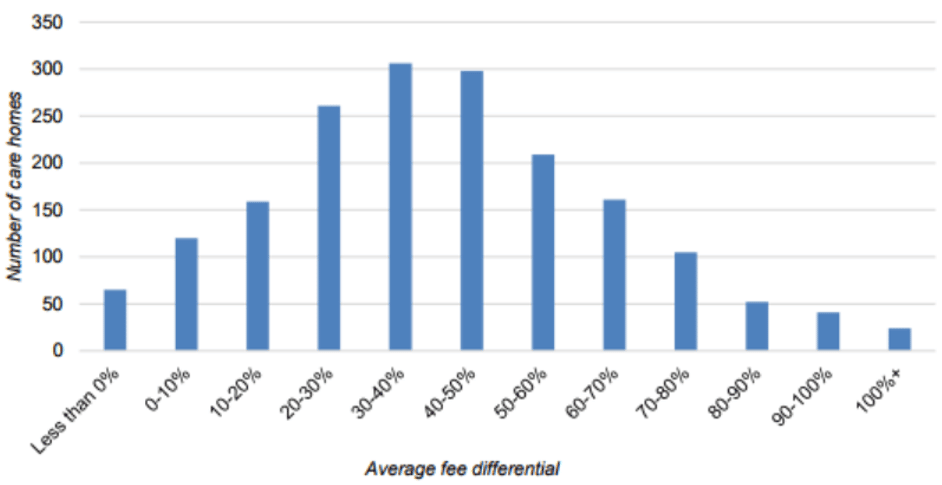We Are chat4business
We are C4B.
C4B is a rapidly growing start up based in Ross-on-Wye, Herefordshire. We launched our fully managed sales chat service at the end of 2019 and are now delivering amazing online chat experiences to a wide range of clients.
What is online chat?
Online chat is a type of communication platform for websites that allows visitors to send instant messages to the business. Chat is becoming an industry standard with 42% of consumers using chat as their preferred method of contact. Implementing and using chat correctly can be an invaluable tool for driving sales, improving your customer experience and delivering the value of your brand.
Our chat product, C4B connect, is a fully managed sales chat solution designed to generate leads, drive sales, and provide an exceptional customer experience. Our team of professional receptionists receive all of our client’s incoming chats. Our team categorise and qualify incoming enquires, directing them in the appropriate direction or further qualifying potential leads before inviting our client’s sales team to join the chat.
Our client’s have had exceptional results from implementing our chat into their teams, with our clients reporting exciting leads from day 1.
To learn more about our chat, launch a chat now or contact us here.
Trust: The key to driving sales in the care industry
Better relationships = Better conversions
It has been reported there will be a 36% growth in the over 85’s population between 2015 and 2025, suggesting that the demand for beds at care homes will continue to grow and the industry will continue to steadily expand. As providers of health and care services, care homes need to build trust with their prospects. Establishing a strong relationships with prospects is the first step in converting prospects to new residents
Delight your customers.
Good customer experience delights your prospects, develops rapport, and builds trust. Trust is an essential driver of sales, with up to 81% of customers basing their purchase decisions on trust. Trust and customer service are intrinsically linked because customer service is essentially about building relationships. You need to have a great customer experience to build trust with your visitors. Surprisingly, consumer trust is actually declining internationally, suggesting that customer experience is an underexploited competitive advantage and investing in a great experience could yield strong results.
Delivering customer experience in the care industry.
Seeking assistance for your own or someone else’s health can be a worrying process. Implementing a great customer experience can alleviate the stress of this process. Delivering a frictionless service with clear communication, compassion, and credibility is essential. This is an emerging trend being embraced across the health care industry, with 49% of executives looking to invest into their customer experience in the next 5 years. Effective implementation of technology will facilitate this experience, providing the tools to deliver a hyper-personalised, efficient experience.
Why chat
Deliver a brilliant first impression with online chat
Online chat is a key communications channel for your website that allows your visitors to send messages your business. As an instant messaging platform, chat is a great tool for engaging and converting your traffic into prospects. Statistics suggest that chat users are 2.8 times more likely to convert a lead as well as spend 60% more. Up to 1 in 3 users over the age of 55 have used chat, suggesting it is an important and growing method of communication.
Investing in your customer’s relationship with your business will ultimately yield trust, improve your conversions, and drive sales.
If you would like to learn more about how chat can be used to drive your customer experience, launch a chat now and speak to one of our receptionists or contact us here
Why Chat? The essential reasons why you need chat on your website
Online chat has rapidly been adopted across industries as a key communication platform on their website. Chat allows visitors to have their enquires answered instantly directly through a business’s or organisation’s website. Chat can be used by your team or can be managed externally, the type of chat implemented will vary depending on needs and resources.
Drive your sales pipeline
Businesses are using chat as a key part of their sales process because it is highly effective. 85% of businesses use chat for B2B sales and 74% use chat for B2C sales, highlighting its widespread adoption. Additionally, adding live chat to your website can increase your conversion rate by 12%. As a sales tools, chat is a cost effective solution for increasing your sales and maintaining a competitive advantage.
Boost your customer experience.
Chat is key tool in your arsenal for building a great customer experience. Invesp found chat consistently ranks as the most impactful communications platform for driving customer experience, citing 73% of customers find chat to be the most satisfying way to communicate with businesses. Implementing a strong chat solution will delight your customers and drive sales.
Build a competitive advantage.
Ultimately, the successful implementation of the right chat solution will deliver a competitive advantage. A good chat service will be an invaluable competitive advantage for attracting and retaining customers. Delivering the right chat service will be dependent on your business’s requirements, your available resources, and the products or services your business offers. Developing a competitive advantage using chat service is ultimately about delivering the right value to your customers.
Launch a chat now to discuss how C4B can help you deliver your chat needs or get in touch here.
5 KPIs to Measure Your Live Chat Performance
Providing Live Chat on your website comes with many significant advantages. It provides high-level engagement with your website visitors and can completely transform your customer experience. By delivering personalised human interactions you can increase your leads, sales and customer loyalty!
How do you know if you are leveraging your live chat software to its potential and maximising the benefits it provides?
Measuring key performance indicators (KPIs) can enable your business to continually improve your live chat function and performance. Before you can implement changes from the statistics you need to know what exactly to measure! Here at C4B we are constantly reviewing our clients chat statistics, to help maximise their Return on Investment (ROI). We have compiled a list of 5 of the most crucial live chat metrics that you should measure on a regular basis!
1. Chat to Conversion Rate
Conversion rate is the key chat KPI to monitor. Conversion rate is the percentage of chat visitors who convert into customers. The successful conversion of enquiries will be determined by the sales qualification process. For the property sector this is when a chat visitor books a viewing or schedules a valuation. For care homes it is about increasing care home admissions. Ultimately, conversion rates can tell you how effective the efforts of your agents/advisors are.
2. First response time (FRT)
The first response time (FRT) is a key metric for measuring your customer experience. It is the time an agent takes to respond to the chat visitors first message. Measuring how long a prospect must wait for a response is crucial to maintaining high levels of customer satisfaction. If a prospect visits your website and starts a chat it is vital that their message is answered quickly.
If your prospects must wait more than a few minutes, they may grow impatient and you will risk that they will look for an answer elsewhere (i.e., your competitors). At C4B our FRT is an average of 5 seconds, ensuring your customers are engaged promptly and enhancing your brand reputation.
Ultimately, if you offer a live chat function on your website you should ensure that there are always responded to quickly and professionally.
3. Total Number of Chats
This metric is quite straight forward, but also vital! Measuring the number of chats that are initiated by visitors each day can tell you how effectively your online strategy is performing. It is important to constantly review this metric; if your chat volume increases you may need to expand your team.
This metric can also indicate the success of other elements in your digital strategy. It is important to understand that the success of your live chat is dependent on your ability to drive traffic to your website. Without website traffic, you will not have leads to capture and convert into sale.
4. Point of Interest (POI)
Our chat software offers a POI (Point of interest) function. Each chat visitor is assigned to a category depending on the nature of their enquiry. For example, clients in the property sector may have ‘Vendor, Tenant, Buyer, Landlord and Other’ groupings. This function can enable agents to categorise chats ensuring the context is always clear. This also enables you to review how many requests you are getting per category.
These statistics can provide you with valuable information; for example, which marketing campaigns are working as well as what is not working and may require change. Consequently, these insights can help you structure your sales and marketing activity to better suit the needs of your customer
5. Average Chat Length/Duration
Chat duration (chat length) is the amount of time it takes for an agent/adviser to answer a visitor’s enquiry. Monitoring this KPI can help you assess the overall effectiveness of your live chat process. Ideal chat length varies by industry. Unusually short chat length can indicate the agent may have not obtained enough information and the visitor was not engaged in the conversation. Similarly, long chat length may indicate that the visitor was not engaged due to slow responses.
At C4B the average chat duration ranges from 15-25 minutes with approximately 27 interactions. This ensures a fully qualified sales lead with the correct contact details to follow up with.
Summary
These are not the only chat KPIs you can monitor. There are plenty more. However, these 5 KPIs are all key to chat performance. The most crucial KPI being conversion rate and return on investment (ROI); put simply is live chat on your website driving sales?
In conclusion, measuring KPIs can enable your business to continually improve your live chat function and performance. By providing live chat on your website, you can increase your leads, sales and customer loyalty!
Are you looking to implement chat onto your website but not sure where to start? Launch a chat now to speak with a member of our team or contact us here.
A Brief Overview of the Care Home Sector and How to Stay Ahead
The Care Home market has always had it’s winners and losers. Shifts in the economic environment have contributed to some major players experiencing challenging circumstances over the last decade. However, it remains a vibrant and profitable market, especially for those businesses whose product attracts the private client. The winners over the next 10 years will remain the private operators who are able to differentiate their offering from their local competitors.
This report seeks to describe the market and offer a solution for staying ahead.
According to Businesswire, there are 5,500 care home providers in the UK. These operate in a £16.6Billion marketplace (down from £17.3Billion in March 2020). The market is relatively diffuse and fragmented where “economies of scale are limited and there are significant diseconomies of scale” (House of Commons Briefing Paper, 2018).
Over the last 10 years, there has been a decrease of 3,000 homes; and since 2000, there has been a decrease of 55,000 beds. Much of this can be attributed to the in-home care offering which has grown at a similar rate to the shrinkage in residential and nursing care.
Fig 1 – Decrease in Care Homes 2009 – 2020

Government data from April 2020 lists 15,517 homes in England with 457,631 beds in total (average of 29.5 beds per home). Nearly 20% of all homes in England are located in the South East and more than 8 out of 10 of the beds are provided by the private sector. Locality is important as most residents book into homes less than 10 miles from where they, or their family live.
Fig 2 – Care Homes / Residential Homes By Region (England, 2020)

According to LangBuissons 2019 research, average residential care home fees in England were £655 per week, with nursing care at £937. Self-funders or private clients pay a premium of up to 50% over council commissioned care and many providers find that council commissioned rates are less than their average costs incurred in providing that care.
Fig 3 – Price differential by Care Home (CMA, 2017)

The large differential in rates has led to some two-tier local markets servicing either the council commissioned care or the self-funded residents. The for-profit providers favour the private rates and focus on attracting those customers within their homes’ locality. Consequently, some local authorities are re-entering the residential care market in an effort to fulfil the demand at the rates they have set.
With the market running at 79% capacity (compared to pre-pandemic 87.3%), competition is rife.
Demand is set to increase with the over 85 age group growing by 27.5% per year to 2030. JLL forecasts that this will require an additional 110,000 beds over the next decade.
In summary, the market is stable, demand is growing and capacity exists. Self-funded residents are more profitable and the care homes that attract them can generate good profit margins. Until the challenge of the two-tier market can be resolved, care homes need to differentiate themselves from their local competition to win the more profitable private clients.
One way to differentiate is to use technology to capture prospects early in their buying process. As pretty much all research is carried out online, this is the best place for an early engagement. Though adoption of the internet is mainstream, this last year has seen a forced shift for even the technology laggards to do their care home research on-line. Investment in company websites and online marketing has increased and is seen as more critical than ever for the success of even the most traditional businesses. (See previous blog here)
At C4B, we believe that it’s important for your sales team to engage with target prospects early in their buying journey. They want help to make the right decision and if your sales team can help them before they engage with your competition, it’s good for them and it’s great for you.
C4B provides a unique managed chat service, focussed on increasing care home occupancy by connecting your sales team directly to prospects whilst they are in buying mode.
If you want to find out more about this innovation, contact James Lloyd on 07710 311577, or email james@c4b.live
The C4B difference
Generally, selecting care is a personal and emotional process. It requires the empathy and knowledge that is sewn within the fabric of successful care businesses.
Managed Chat services use a combination of software and receptionists to engage prospects whilst browsing your website and researching options. They will seek to capture contact information and basic requirements before e-mailing the enquiry through to you.
The developers at UK based C4B identified several shortcomings with these traditional managed chat services in relation to sales in the Care sector. First and foremost was the lack of rapport building with the prospect. Linked to this was the lack of relevant qualification and finally was a lack of immediate follow-up.
Establish Trust
Rapport is important in high involvement purchases and is normally built through product knowledge and personality. The problem with traditional managed chat services when selling your product is that the provider will have at best, a static and basic understanding of your product. Availability and type of care often go unanswered and the ‘conversation’ is limited. The initial conversation necessarily ends with the comment that the enquiry will be passed on, leaving the prospect to click away without knowing what happens next.
Identify Requirements
Qualifying a prospect is more than just gathering name, email address and phone number. This first impression will never happen again and taking an interest in the prospects circumstances is key to helping them buy your service.
Maintain communication
Follow-up confirms that a conversation has been registered and provides the comfort to the visitor that they are in your system. Customised comments confirming visits or next steps enable your sales team to control this early stage of the relationship.
The C4B Solution
To address these issues, C4B Connect engages the website visitor within 5 seconds of launching a chat. We qualify that the visitor is a prospect and we invite your sales team to join the chat then and there. The prospect is continually engaged and further qualified. Ideally, one of your sales team join during the qualification process and work their magic in booking a visit to your home. When the salesperson ends the conversation, a wrap-up email will be displayed on their screen which can either be sent directly or customised and sent. This wrap-up email contains a template message with your branding and a transcript of the chat conversation. This is addressed to the prospect with a copy to your team or directly into your CRM.
If your sales team are unavailable, the C4B receptionists will complete the chat and send the wrap-up email on your behalf.
C4B Connect does not use bots. Choosing residential or nursing care is by definition a personal experience. Within our target age group, bots are not looked at favourably and are likely to trigger a negative response. We are keeping an open mind for the future.
If you would like to find out more, call James on 07710 311577 or email james@c4b.live
Complement your live chat by increasing the effectiveness of your website through digital marketing
The effectiveness of your website is only as good as the quality of the prospect that visits it.
In this article, we are going to
- Help you discover who your online customers are so that you can target more of them
- Help you to increase the number of targeted visitors to your website
- Help you find some quick wins to increase the effectiveness of your website today.
Discovering your customers
It is essential to know who is visiting your website and distinguishing between those that actually want your products and services and the time-wasters.
To do this you need to install the following on your website to find out how many people visit your site, where they are coming from and more importantly, what they are doing once they arrive there.
Google Analytics – A free marketing tool that helps you analyse: acquisition (data about your visitors before they arrive at your site), behaviour (data about your visitors when they visit your site) and the effectiveness of all your online marketing activities.
Google Search Console – Tracks the performance of your website so that you can see which parts work and the areas that need improving.
Google Tag Manager – allows you to easily put various pieces of code on your website that can be used to track the actions of a visitor like a link click or a form submission.
If you would like help installing these tools or advice on how to use them, take advantage of a free 1-hour consultation with LPDigital by using the Microsoft Booking form at the bottom of this blog.
Increasing the number of visitors
There are a number of ways to increase traffic to your website. Each can be used alone, but they complement each other and are far more effective when used together.
SEO – Search Engine Optimisation involves designing and creating well-structured pages to enable search engines to quickly scan and rank your pages for content, user experience, and relevance. Better optimised pages rank higher in the results. SEO is also enhanced by: good quality external links, an informative Google My Business listing, dedicated landing pages for distinct areas of your business (e.g. different pages for different care homes within a care home portfolio), frequently asked questions and a robust schema to help the information on your site be accessed quickly.
Google Ads – Google adverts bring targeted visitors to your site instantly. They use keywords to identify users like, ‘care homes near me’. They work on a pay-per-click basis so that you only get charged when someone visits your site.
Social Advertising – Utilise Facebook & similar platforms to target people who have shown an interest in your product or service
Retargeting – Tracking and engaging with users of your website who have visited, but not yet made an enquiry, with tailored marketing messages
Find your quick digital wins
To find out how your website is performing right now and receive a list of quick fixes that could transform your website’s effectiveness, click on the link and use the LPDigital Website Checker. It takes less than a minute and it’s totally free.
Why Qualify? The Importance of Qualifying Sales Leads in Real Time
The Importance of Qualifying Sales Leads in Real Time whilst the Prospect is in ‘Buying Mode.’
Firstly, what is lead qualification?
Lead qualification is a systematic process of assessing potential customers by their ability, readiness, and willingness to buy your product or service.
Lead qualification is a process of marketing and sales teams working together to forecast the probability that a prospect will ultimately make a purchase (convert into a sale). It occurs at every stage of the sales journey and ultimately decides if the prospect will be funnelled down the sales pipeline.
Figuring out how to identify the right opportunities is a crucial step to streamlining your engagement process.
However, your lead generation figures may be high but are they high quality leads? The sooner you decide whether you and a new lead are a good fit the less time and money you will waste.
Qualifying sales leads in real time
The real value of lead qualification goes beyond optimising your sales process. It is also crucial to reach out to leads at the right time. Being able to qualify leads in real time, right at the beginning of the sales funnel, is the most efficient form of lead qualification. The ideal time to do this is when potential leads/customers are on your website.
Lead generation can be challenging. You need to figure out which individuals are likely to be interested in your services. Visitors on your website have expressed an interest in your company, so they are much more likely to convert into sales/paying customers.
Not only can resources be wasted on unqualified leads, but they can also be wasted on making lead qualification a long and tedious process. Many companies leave lead qualifying to their sales teams, meaning that they must spend hours calling leads which aren’t ready to begin business with their company. Your sales team are specialised individuals; there to make sales to people that are appropriate for your company.
With a team of virtual receptionists manning your website and qualifying your leads, you can focus on converting the right leads to customers. Fully managed chat enables you to respond to leads faster and convert more prospects to customers.
Filtering your leads through a team of virtual receptionists gives you more control over the qualification process.
C4B Connect, Managed Sales Chat.
Whether you are in the care industry or the property sector. At C4B we work with you to develop a custom and bespoke qualification process featuring questions specifically designed to identify the right leads for your business. C4B Connect engages the website visitor within 5 seconds of launching a chat. Our process includes collecting the clients contact information, the nature of their enquiry, and clear details of their preferences or needs.
Once qualified, your sales team are invited to join the chat. This enables your sales team to sell in real time to your prospect whilst they are in ‘buying mode’. Leaving your sales team to do what they do best- selling!
We follow up on all qualified sales leads with a follow up email and chat transcript to ensure you will never miss an opportunity.
Looking to implement chat onto your website but not sure where to start? Launch a chat now to speak with a member of our team or contact us here.
C4B – We Power Chat that Drives Sales
The Importance of Personalising your User Experience (UX)
Businesses stand out for the experiences they create. Within our changing world the evolution of the user experience (UX) is as important as it has ever been. Industries and companies, of all sizes, have successfully transitioned into offering online experiences for their prospects.
An online UX is considerably more than a website. It is a digital impression of your business and often that vital first engagement. It is an opportunity to leverage technology to connect with your prospects, share your brand values, grow your business, and create a ‘wow’ factor first impression.
Customers not only want a seamless UX but also expect brands to provide them with a unique and personalised experience throughout the journey. For example, research by Epsilon found that 80% of consumers will make a purchase from a brand that offers personalised experiences. Delivering personalised customer service has become essential to staying competitive in the market. In addition, Salesforce found that adopting a personalised customer engagement strategy has helped 97% of marketers report a quantifiable boost to business outcomes.
In short, a personalised UX is key. One approach to delivering a personalised online UX is through fully managed live chat. Live chat is the most effective and fastest way to connect with prospects online, whilst they are in ‘buying mode’. Importantly, it helps website visitors find the information they need and the answers to their questions. At the same time initiating customer engagement and starting the next stage in the sales journey.
Making each one of your prospects feel connected and valued, is essential in creating a positive UX. This is particularly crucial in the care home industry. Choosing the right care home for a loved one can be an emotional experience. Providing live chat on your website can enable you to offer this personalised, positive, and connected experience.
However, it is crucial to note that customers want to talk to real people. A 2019 survey by CGS found that 86% of consumers prefer to interact with a human chat agent rather than an AI-based system such as a chatbot. 71% of participants also said that they would be less likely to use a company if they did not have human customer service representatives available.
So how exactly can fully managed chat provide a personalised UX for your customers?
Firstly, chat offers an instant and informal way to communicate.
Advisers can adjust their responses to suit their individual communication style – creating a much more personal connection with prospects. For example, using chat ensures you have an opportunity to personalise the conversation and tailor your responses. Additionally, during the conversation, you can refer to the visitor by their name and answer their questions directly.
Chat conversations are instantly documented and easily accessed.
With C4B’s fully managed chat, chat transcripts are emailed to both the visitor and your team at the end of every chat. The context is always clear, and the agent does not need to notate anything as all the information is included in the chat transcript. This will ensure the chat enquiry is correctly followed up and all sales opportunities are maximized.
Advisers can also include their name and a real profile picture.
A personal UX is not possible without disclosing any personal information. C4B will introduce you at the start of the chat and display your profile picture. Allowing you to build a much more personal connection with your prospects/website visitor. Thus, building rapport and trust with your prospect.
Data insights can help you structure your sales and marketing activity to better suit the needs of your customers.
With C4B’s chat reporting you will gain insights into which marketing campaigns are working, as well as what is not working and may require change. These insights can help you structure your sales and marketing activity to both personalise and better suit the needs of your customers. Our reporting console offers you a complete overview of all your chats, team statistics, and details of your leads. You can measure your number of daily chats, enquiry type and our response times with our advanced reporting.
At C4B we understand that a personalised human connection is the key to a great customer UX. We provide an outstanding, high quality, and personal service that is designed to be empathetic and deliver an exceptional UX.
Looking to implement chat onto your website but not sure where to start? Launch a chat now to speak with a member of our team or contact us here.
C4B – We Power Chat that Drives Sales
9 Marketing Techniques to Maximise Care Home Occupancy Rates
The first step should be to define your care homes mission, vision, and values or more succinctly put – your care home business objectives. These should be clearly aligned with your desired care home residents (customers) and how you envisage delivering care (services) within your care home. Your subsequent marketing strategy should encompass these objectives.
1. Brand Guidelines
Your brand guidelines will underpin all your care home marketing and ensure a consistent voice to your prospective residents. Typically, you would want a brand story, company logo, colour palette, typography, image guidelines and tone of voice. This is not an exhaustive list but it is essential that you define your brand and deliver a consistent message about your care home.
2. Website/Chat
A website is a significant investment in your marketing strategy (80% of major purchases start with online research). Often this can be the first touch point for a prospective resident or a family member/friend. A distinctive look and feel of your website are essential to deliver your brand story and ensure you stand out from you competitors.
It is important to have a distinct landing page for each individual care home, as prospects will usually search by the actual care home’s name. The key purpose of your website should be to get your website prospects to visit your care home, so plenty of call to actions (CTA’s), to create an immediate interaction and response. C4B, managed sales chat is the perfect way for your prospect to chat directly with your care home team in real time. This is whilst your online prospect is in ‘buying mode’ and thus your team are able appoint them to visit your care home.
3. SEO/PPC
Now you have defined your brand and built your amazing website it is essential that your care home website can be located online. 75% of people never scroll past the first page of search engines.
Search Engine Optimisation (SEO) is the process of organising your website’s content by topic to improve the likelihood of your care home appearing as high up on the first page of the search results.
Pay-per-click (PPC) is an online advertising model in which a care home pays a publisher every time an advertisement link is “clicked” on. Alternatively, PPC is known as the cost-per-click (CPC) model. … Google Ads, Facebook Ads, and Twitter Ads are the most popular platforms for PPC advertising.
Google analytics is a web analytics service that tracks and reports website traffic. It is important to measure and track this investment, so you can fine tune and adjust accordingly.
4. Social Media
Social media usage is one of the most popular online activities. In 2020, over 3.6 billion people were using social media worldwide, a number projected to increase to almost 4.41 billion in 2025.
The most popular social media platforms are Facebook, Instagram, Twitter, and LinkedIn. LinkedIn is predominantly a business (B2B) social media platform. Facebook is seen by many as the most popular consumer (B2C) social media platform.
It is great to tell a story that is deeply meaningful to the audience, it can provoke their emotions and build a strong connection with your care home brand.
5. Open Days
An open day is a great way to show case your care home with potential residents and their families. You may also want to invite business associates and community members. Creating an event around evening drinks or afternoon tea, whilst benefiting a local charitable organisation, can often be a good way to attract visitors to your care home open day.
6. TV/Radio/Newspaper
Your local press is always looking for stories. A good news care home story is often a favourite with local press. Approach your local journalists and build a relationship with them. Exploit natural PR opportunities and become the local press’s go to care home when the care sector is in the public eye. Making sure your care home is either mentioned or linked to the press story.
7. Referral programme
There is nothing better than an existing resident and their family recommending you to a prospective resident and or their family. Have a great referral programme which encourages and rewards a referral. Remember to well publicise the programme (care home newsletter) and make sure it is open to you care home team too.
8. CRM
Now you have created these new resident enquiries it is important to follow these up in a timely manner. It is quite usual for several care homes to be considered. You want to keep your care home at the top of the list.
Therefore, it is important to track all these enquiries and consider utilising a Customer Relationship Management (CRM) system. The main thing is to ensure every care home enquiry is followed up quickly and correctly.
9. Your Team
Your care home team are your biggest asset and therefore it is imperative to get them involved with your new resident process. Inform them of the referral programme and get them involved. Ask them to share your social media posts and see if their social media contacts will follow your care home social media pages.
As they work in the care sector your team will often be seen as experts in their industry, with family and friends asking for their advice. Everyone in the care home can be a salesperson but is important to inform and motivate them in the process. Keep the team updated with new residents coming to your care home and where the care home occupancy rates are at.
C4B – Here to help.
This is a considerable list of ideas but in no way exhaustive. Whilst you and your team will be able to manage many of these skills, it can also seem quite daunting. You may want to seek some further professional assistance.
At C4B we know many professionals in the care sector and are happy to assist you. If you would like some advice or further information, please check out our website https://www.c4b.live/ or email me at marcus@c4b.live.
Happy marketing and good luck.
C4B – We Power Chat that Drives Sales










